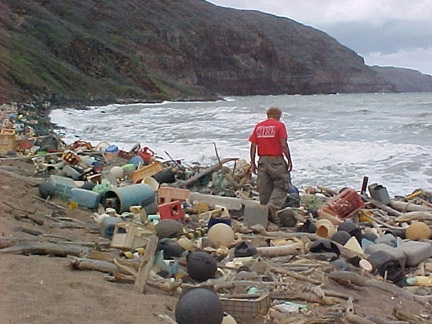January 28, 2016 Updated 1/28/2016
Email Print

A new study, which has been published in the journal Anthropocene, examines the evidence that the planet is being noticeably altered by the production of long-lasting man-made materials
The planet’s oceans and lands will be buried underneath increasing layers of plastic waste by 2050 due to human activity, according to research led by the University of Leicester.
A new study, which has been published in the journal Anthropocene, examines the evidence that the planet is being noticeably altered by the production of long-lasting man-made materials, resulting in us entering an ‘Age of Plastic.’
Jan Zalasiewicz, professor of palaeobiology from the University of Leicester’s Department of Geology said: “Plastics were more or less unknown to our grandparents, when they were children. But now, they are indispensible to our lives. They’re everywhere – wrapping our food, being containers for our water and milk, providing cartons for eggs and yogurt and chocolate, keeping our medicines sterile. They now make up most of the clothes that we wear, too.
“Plastics are also pretty well everywhere on Earth, from mountain tops to the deep ocean floor – and can be fossilized into the far future. We now make almost a billion tons of the stuff every three years. If all the plastic made in the last few decades was clingfilm, there would be enough to put a layer around the whole Earth. With current trends of production, there will be the equivalent of several more such layers by mid-century.”
The study, publication of which followed a similarly critical report from the World Economic Forum and the Ellen MacArthur Foundation, suggested that plastics have such a long-lasting impact on the planet’s geology because they are inert and hard to degrade. As a result, when plastics litter the landscape they become a part of the soil, often ending up in the sea and being consumed by and killing plankton, fish and seabirds.
Professor Zalasiewicz added: “Plastics will continue to be input into the sedimentary cycle over coming millennia as temporary stores – landfill sites – are eroded. Plastics already enable fine time resolution within Anthropocene deposits via the development of their different types and via the artifacts, known as ‘technofossils,’ they are molded into, and many of these may have long-term preservation potential when buried in strata.
“Once buried, being so hard-wearing, plastics have a good chance to be fossilized and leave a signal of the ultimate convenience material for many million years into the future. The age of plastic may really last for ages.”




























